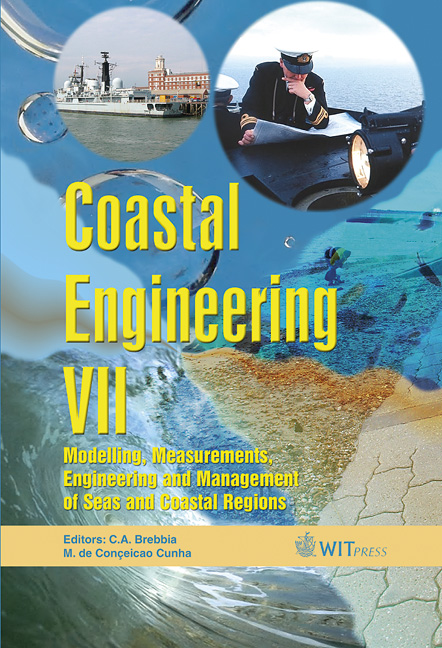Numerical Simulation Of Surface Wind And Rainfall Fields Caused By A Typhoon
Price
Free (open access)
Transaction
Volume
78
Pages
8
Published
2005
Size
817 kb
Paper DOI
10.2495/CE050301
Copyright
WIT Press
Author(s)
T. Yamashita, K. Kyeongok, H. Nishiguchi & T. Tamada
Abstract
A typhoon is the most significant meteorological event for natural disasters in the hydrosphere, which are caused by strong winds, heavy rain, river floods, storm surges and high waves. It is an important research theme for coastal engineers to develop the numerical simulation technique for strong wind and heavy rainfall fields caused by a typhoon. This study first carried out a simulation of strong wind fields by using a simple typhoon model of gradient-wind field reproduced with the Schloemer’s atmospheric pressure distribution model. Then a meso-scale typhoon model MM5 was employed to simulate both surface wind and rainfall fields caused by typhoons, which were compared with the gradient-wind field of simple typhoon model for Typhoon T9918 in the Suohnada Sea, Japan and the observed precipitation in the Korean Peninsular during Typhoon T0215. It is concluded that MM5 works well in both simulations of surface wind and rainfall fields caused by a typhoon. Keywords: typhoon, surface wind, rainfall, numerical simulation, meso-scale meteorological model, MM5, MASCON model. 1 Introduction Strong wind and low atmospheric pressure of typhoon generate storm surges and high waves that are the main causes of beach erosion and damages of coastal structures. It is an important task for coastal engineers to simulate the field of external forces of typhoon for coastal disasters and impact of coastal environment. Atmospheric pressure distribution of typhoon can well be simulated by a concentric circle distribution (e.g. Schloemer’s model
Keywords
typhoon, surface wind, rainfall, numerical simulation, meso-scale meteorological model, MM5, MASCON model.





